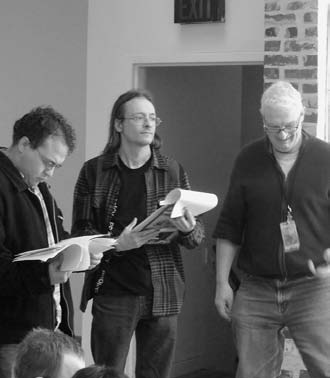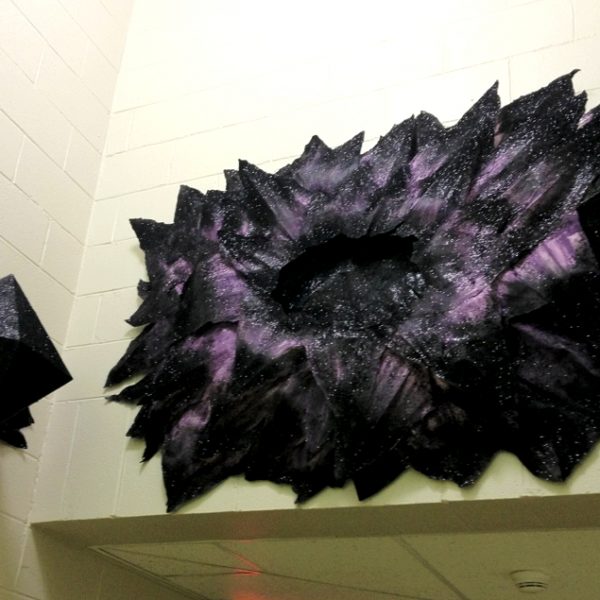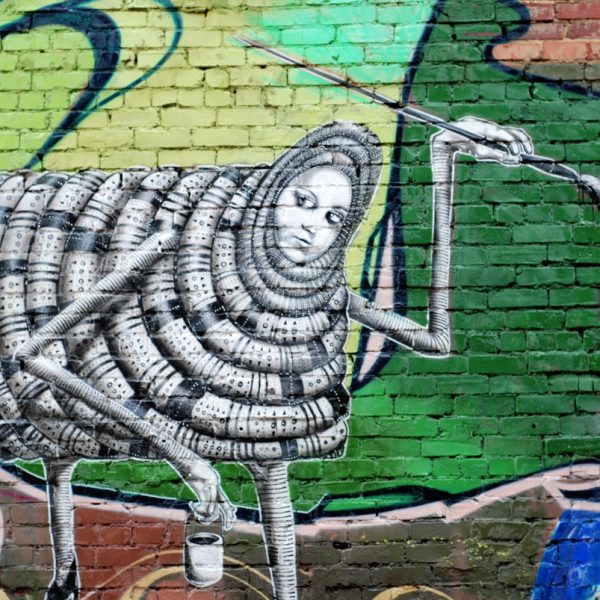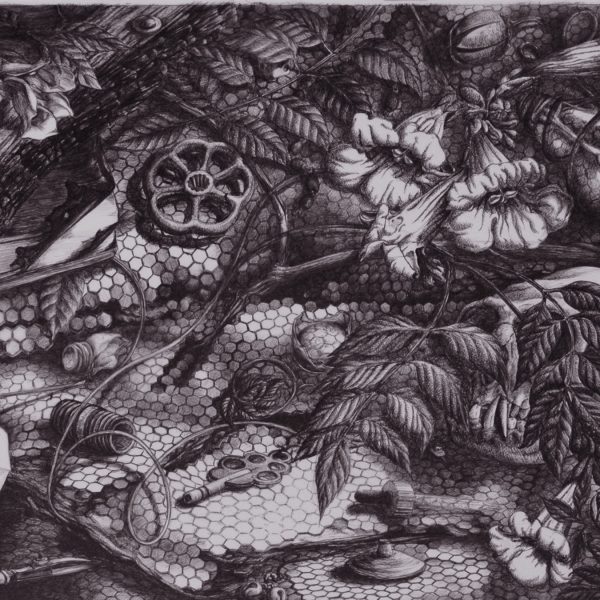This article was originally published in the fourth issue of VIA Noke Magazine, printed in Roanoke, Virginia in March 2013.
Written by Scott Tate
Some who read this, perhaps newcomers to the Valley’s alternative arts scene, or those who remain steadfastly at the perimeters of the arts community, peering occasionally at newspaper event notices, maybe with a curious eye or a dismissive head shake, probably wonder just what the “marginal arts” might be and of what possible relevance?
My initial response to such questions is highly personal and decidedly unscientific. In 2011, my son and I attended the MAF parade and Absurdist Street Carnivale which immediately followed. Onlookers and procession participants joined together in tossing rubber chickens and merrily stomping, jumping and dancing on giant sheets of bubble wrap. Performance artists orchestratedly smashed a piano. As we drove home, my son clutched two souvenir piano fragments of painted black wood and proclaimed, “That was cool!” I agreed – the MAF events, even in their most self-consciously avant-garde manifestations, are memorably cool.
My secondary response is a bit more deliberative. I studied some of Roanoke’s arts-based efforts as part of my doctoral dissertation at Virginia Tech and have subsequently been engaged in such studies of other places. Festivals have long existed and Roanoke’s MAF continues “3,000-plus years of human festival tradition.” Noted cultural anthropologist Victor Turner has cited the role of festivals as liminal spaces, wherein fellow inhabitants and community sites are encountered in new and surprising ways outside of and apart from their usual context.
The MAF finds kinship with fringe arts events of varying stripes which have emerged and expanded rapidly ever since a band of local Scottish artists and playwrights were excluded from the Edinburgh International Festival in 1947. These artists refused to accept this snub and constructed makeshift performance spaces around the festival’s edges, at its “fringe.” The Edinburgh Fringe Festival was born, eventually outpacing the original event in size and in stature, morphing into the “largest arts festival in the world.” Over the past 30 years, fringe festivals have been developed in cities around the world from Australia to Asia, Canada to Chile. Fringe festivals represent attempts to unsettle dominant understandings and perceptions, to create a space for alternatives, to seek out the unusual or quirky.
The bent toward quirkiness, however, should not be dismissed as simple frivolity. Cities have many edges or margins whether geographic or social, economic or cultural, racial or conceptual. The MAF helps illuminate edges and margins, the places where contrasting ideas and meanings may be more visible. Its exact impacts are difficult to quantify. As festival organizer, Brian Counihan described in an interview with the Interstitial Arts Foundation, “It is impossible to tell how this festival will benefit the whole community. We hope it will strengthen local identity, encourage more individual participation in civic issues, and perhaps even add to the local economy.”

Photo by Jim Leftwich 
Photo by Jim Leftwich 
Photo by Jim Leftwich
Art is frequently touted and utilized as an economic driver and a source of community identity. Roanoke is no exception to this trend. The Taubman Museum of Art, a $66 million building, is a visible example. So is the City’s $2 million annual investment in arts and culture through public art, festivals and events, and major capital improvements to downtown cultural anchor institutions. Art as a development strategy is clearly one part of Roanoke’s ever evolving identity.
Research indicates that such strategies may also have adverse impacts, including increased inequalities, funding disparities, and socio-economic exclusion. Roanoke, too, has experienced these drawbacks, as those who have witnessed and winced at the Taubman Museum of Art’s financial struggles and the Arts Council of the Blue Ridge’s seeming dissolution would most likely agree. Art, as economic engine, has its limits. The MAF, however, summons some of art’s other functions, such as its ability to illuminate these contradictions and to affect individual and civic change. In The Aesthetic Dimension, Herbert Marcuse described this type of innate and radical potential of art. Art, by taking reality and “re-presenting” it, is “committed to an emancipation of sensibility, imagination, and reason” and may “lead to the emergence of a new consciousness and a new perception.”
During my doctoral research, I interviewed a number of local artists and cultural leaders. Several younger artists credited the MAF with helping shape a Roanoke arts climate where “new things are happening every day” so there is a “fearlessness to make things happen.” The cultivation of an experimental arts “scene” has broader significance. Economic development practitioners increasingly recognize the importance of networks for incubating ideas and businesses. The MAF has nurtured a sense of “scenius”, a term originating from electronic music pioneer/producer Brian Eno. Scenius refers to a sort of communal inspiration that drives culture forward, and it is present wherever fertile and fluid ‘scenes’ pop up in a community. These scenes may involve artists, developers, scholars, activists, and other community leaders who together constitute an imaginative ecosystem. The MAF, and related activities, help keep alive this imaginative ecosystem that is helping redefine Roanoke.
By encouraging and fomenting an ethos of grassroots innovation and civic self-reflection, the MAF is helping call forth a newer Roanoke, not one dismissive of the past nor one separable from the many other initiatives and ideas taking place, but one that is willing to question, to explore the edges, to energize the civic imagination




